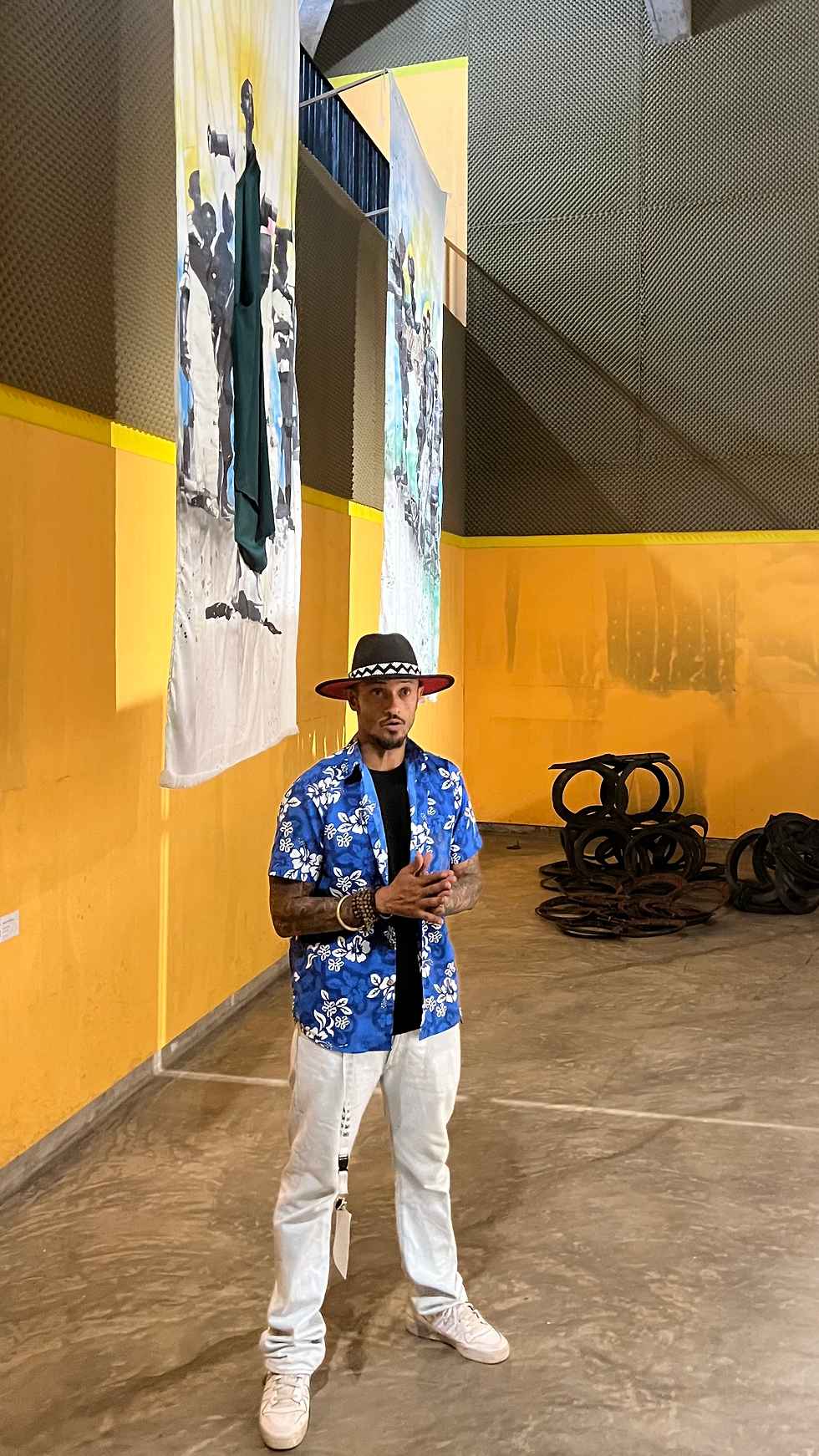Kigali Triennial: A New Chapter for the Creative Industry
- Cynthia Butare

- Feb 28, 2024
- 3 min read
The Kigali Triennial, set to occur every three years, recently concluded last Sunday in Kigali, marking its first-ever occurrence. It served as a dynamic showcase of African creativity and cultural celebration. This 10-day art event transformed Kigali into an active stage for showcasing the collaborative spirit of cultural resurgence. Activities centred around the Kigali Conference and Exhibition Village (KCEV) and other venues across the city turned the Triennial into a hub of performances, exhibitions, and activities that epitomised the essence of cultural revival.

Organised by the Rwanda Arts Initiative (RAI), Kigali City Hall, and the Ministry of Youth and the Arts, the event, which took place from February 16 to 25, 2024, symbolised the revival and growth of arts and culture in Rwanda. During a press conference before the Triennial, Sandrine Umutoni, the Minister of State at the Ministry of Youth and the Arts, emphasised the Triennial's crucial role in enriching Rwanda's cultural landscape and fostering spaces for creative creativity. Umutoni envisioned these new platforms as incubators where artists could display their work, engage with diverse creative expressions, and contribute to the evolving cultural identity of Rwanda. She highlighted the transformative impact of such spaces in nurturing an inclusive arts scene that mirrors Rwanda's rich diversity.

The Triennial's Impact on Creative Disciplines
The Kigali Triennial offered a broad exploration of creative disciplines, celebrating the continent's cultural heritage and weaving various art forms into Rwanda's cultural fabric. This event was not just an exhibition; it was a cultural celebration that injected life into Kigali's streets, featuring over 200 artists from 25 countries and presenting an impressive array of 60 shows. These spanned multiple creative disciplines, including literature, theatre, dance, music, cinema, fashion, digital arts, craftsmanship, and design, aiming to transform Rwanda's cultural scene, professionalise the art market, and establish Kigali as a cultural hub.
The triennial marked a significant leap in the growth of the Rwandan creative industry, creating an ecosystem for artists and cultural practitioners and fostering creative exchange and development. The Triennial's curatorial team was a blend of professionals who brought a rich array of cultural expressions to the forefront. Dorcy Rugamba and Fabrice Murgia infused the event with narrative depth, while Jules César Niyonkuru and Ellen Dennis ensured global representation. Wesley Ruzibiza and Cécile Umutoni explored dance, from traditional Rwandan to contemporary interpretations. Khadja Nin, Herve Twahirwa, and Christian Dessart curated a spectrum of performances, and the visual arts were enriched by El Hadj Malik Ndiaye and Mucyo. Sonia Rolland and Isabelle Kabano immersed themselves in cinema, and the literature aspect was vividly brought to life by Natacha Muziramakenga and Johan-Hilel Hamel. The event also spotlighted African haute couture through the work of Consolatta Rwayitare and Abdou Lahad Gueye, while Samuel Sangwa Muteba and Coumba D. Sow contributed towards sustainable cultural and creative industry growth.

Creative Collaborations and Their Role in Cultural Exchange

This creative approach was instrumental in elevating the Rwandan creative sector, encouraging interdisciplinary collaborations, and fostering creative expressions. By merging different art forms and creating a space where creativity could flourish, the Triennial redefined Rwanda's cultural landscape, pushing the boundaries of traditional art forms and establishing new creative standards.
The Triennial also served as an essential platform for cultural exchange, professional development, and creative artistry, offering Rwandan and international artists a chance to showcase their work, engage with peers, and reach a broader audience. This exchange not only enriched the arts landscape but also highlighted African and, specifically, Rwandan artists' unique contributions.
The Triennial as a Testament to Rwandan Artistry
The Kigali Triennial stood as a testament to Rwandan artistry's resilience, excellence, and ability to inspire and influence. More than an event, it was a movement that propelled African art onto the global stage, showcasing the continent's creative potential. As a catalyst for the Rwandan creative industry's growth, the Triennial marked a transformative moment in its journey towards international acclaim, highlighting the arts' potential as a driver for economic and cultural development in Rwanda.
Reflecting on the Kigali Triennial, we witnessed not just an event but a cultural awakening, where Rwanda showcased its wealth of creativity and artistry to the world. The Triennial, occurring every three years, was more than a festival; it was a celebration of Rwandan and African creativity, marking a significant chapter in the recognition and evolution of the Rwandan creative industry, and shaping the future of the creative industry as a whole.



Comments